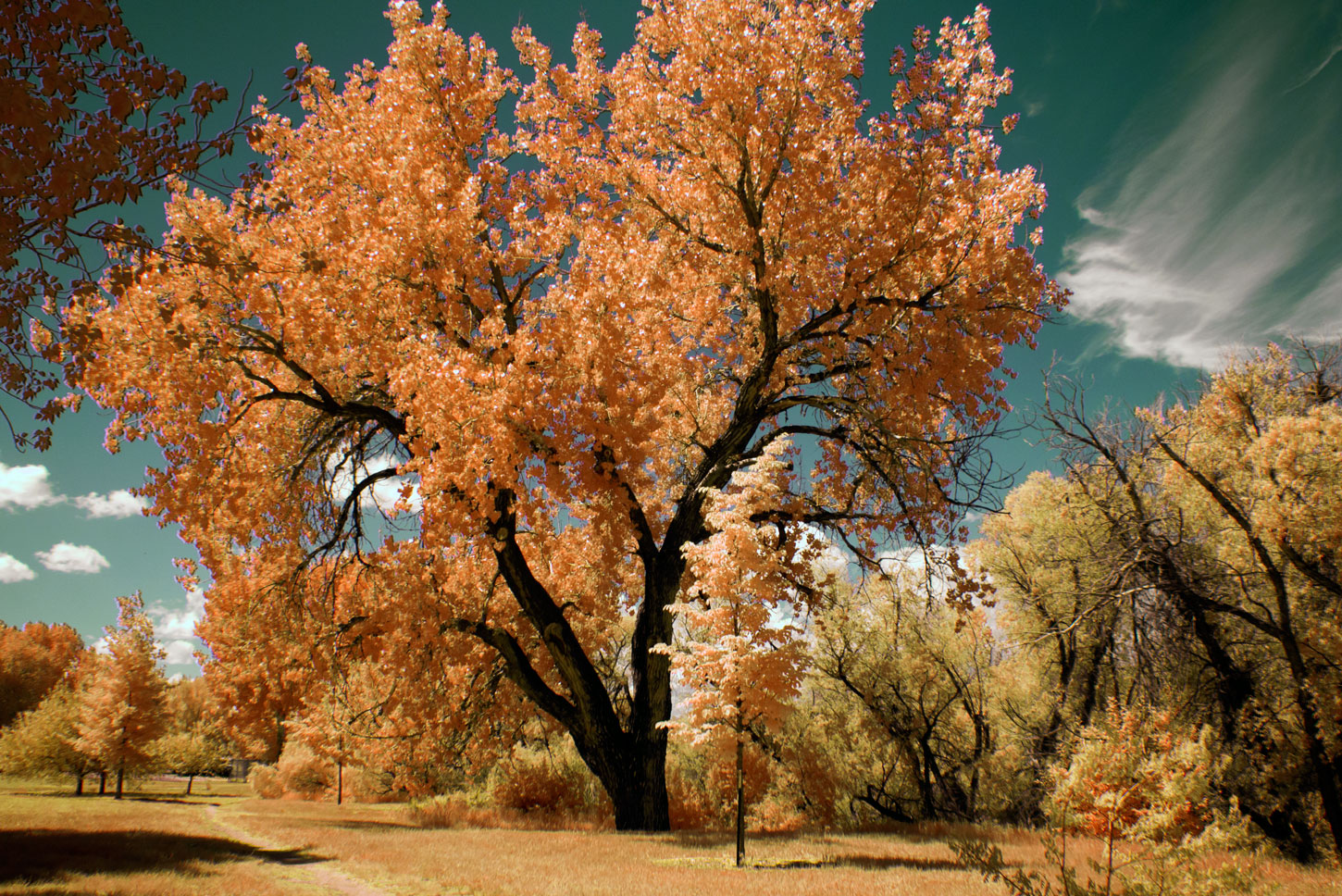Today’s Post by Joe Farace
Landscape photography is the supreme test of the photographer – and often the supreme disappointment.—Ansel Adams
I have never been or even considered myself to be a landscape photographer but I try. I admire the photographs of contemporary giants such as Clyde Butcher but don’t try to emulate their work, while at the same time appreciating their greatness behind the camera.
While it may be a oversimplification to say that almost anybody can make a great photograph in Monument Valley the truth is that that the art of landscape photography is often confused with the real estate business because of its emphasis on location, location, location.

How I made this shot: I made the above image at McCabe Meadows as a RAW+JPEG file with a used Panasonic Lumix GX-1 that I purchased from Roberts Camera and had converted for infrared capture by Life Pixel using their Hyper Color filter. Lens was an Olympus M.17mm f/2.8. The exposure was 1/2500 sec at f/5 at ISO 160. After minor tweaking of the RAW file in Photoshop’s Levels I applied an action from the set that’s part of a tutorial package that was previously offered by Life Pixel—don;t know if it’s still available— for purchasers of their conversions, specifically the “HyperColor to Super Color” action, which turned the image into a dramatic fall look.
Back in the Day
In my younger days when I was attending the Maryland Institute, College of Art I took a class on color photography and the our first assignment was “landscape photography.” I wasn’t a serious landscape photographer then either but was a serious student and developed a set of guiding principles on the “what” and “how” for photographing landscapes initially for the assignment that I still follow today. Please keep in mind that these are just suggestions and are not cast in concrete—this is not and never has been a “my way or the highway” blog—but are presented here for your own explorations of the landscape idiom. You can use’em or lose’em.
- Photograph locally
- Use a lens with a wide angle-of-view
- Create the maximum possible depth-of-field (while being mindful of the effects of diffraction.)
- Saturate the colors
When I completed that assignment oh-so-long ago, it’s subtext was that I was only going to photograph landscapes I could walk to from my house’s front door. At the time I lived in Baltimore City and after projecting the 35mm slides (remember them?) I announced that subtitle to the teacher and my fellow students asked to see them again. That’s just the kind of affect you want to have on whoever your own audience may be—“can I see it again?”
Each weekday and some weekend days—although I’ll confess to becoming a wimp on some of these recent cold days—I try to take a walk up Daisy Hill and around Bingham Lake. I usually take along a camera with me because I never know what I may find along the way to photograph. Using images from this walk and the ones I took at my former home I produced a presentation that I made once upon a time and sometimes the audiences, as they did back when I was in art school, ask to see them again.
And so If you enjoyed today’s blog post and would like to treat me to a cup of Earl Grey tea ($3.50), click here. And if you do, thank you very much.